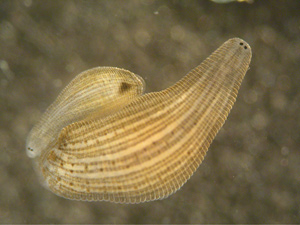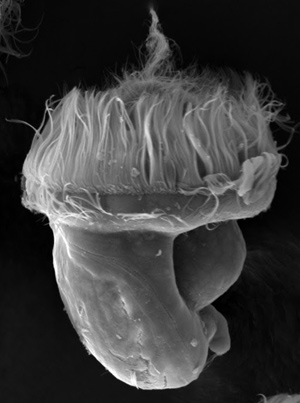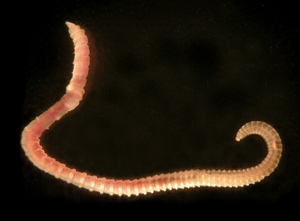What do leeches, limpets and worms have in common?

Leeches, despite the yuck factor, have captured the hearts of two University of California, Berkeley, scientists who are part of a team that this week is publishing the leech’s complete genome sequence.
“This genome has revolutionized our studies,” said David Weisblat, a UC Berkeley professor of molecular and cell biology who lobbied for inclusion of the leech in a genome sequencing initiative that has targeted a variety of animals in order to learn what they have in common with one another and with humans.
The initiative is being led by Daniel Rokhsar, UC Berkeley professor of molecular and cell biology and of physics and program lead for eukaryotic genomics at the Department of Energy’s Joint Genome Institute (JGI) in Walnut Creek, Calif. His multinational team published the genomes of the leech and two relatives, the limpet and the marine worm, or polychaete, in the Dec. 20 issue of the journal Nature. The publication comes after five years of efforts analyzing mountains of information provided by the initial sequencing effort.
“Through comparison of these diverse genomes with each other, we can learn what animals have in common with each other, which in turn tells us about the features that their common ancestors had,” said Rokhsar. “That is a big driver for comparative genome sequencing – it is one of the few ways we have of looking back in deep time.”
For these organisms, deep time means more than 500 million years ago, toward the end of the Precambrian era, when they split off from animals that eventually evolved to become vertebrates – animals with backbones – such as humans.

These three genomes are important because they represent a group of animals that makes up between one quarter and one-third of all marine creatures. Called lophotrochozoans, they range from clams, snails and octopuses to segmented worms and even earthworms, most of which develop from an egg to an intermediate larval stage called a trochophore before metamorphosing to their final form.
“These trochophores are small, free-swimming ciliated larva, first described over 100 years ago, and this mode of embryological development underlies a tremendous amount of animal diversity in the oceans,” Rokhsar said.
“It’s incredible to think that over half a billion years ago, there was an animal with a trochophore larva that was swimming around in the Precambrian seas – and that animal gave rise to so much modern diversity,” he said.
Limpets and polychaetes
Based on a preliminary analysis of the sequenced genomes, the three animals have a lot in common with not only humans, but with other animals that seem very distantly related, he said. For example, the gene content, gene structure and even chromosome organization of the owl limpet Lottia gigantea – a smaller relative of the abalone ‑ and the polychaete Capitella teleta, a marine segmented worm, are quite similar to other invertebrates, pointing to the unity of animal genetics and biology. This similarity extends to humans, despite the dramatic anatomical and physiological contrasts between humans and invertebrates.
There are some notable differences that turn up in the analysis as well. Vertebrates, including humans, have a unique and complex immune system, for example, whereas invertebrates have a primitive immune system.
Weisblat, one of leading scientists in the world studying leech development, said the new leech genome sequence has greatly extended his research into how leech embryos develop. For example, he hopes to explore how and when body segments arose, as exemplified by the segmented marine worms and the leech, but not the limpet.
“When people learn I work on leeches, some people think it’s cool, others think it’s yucky. But the leech we work with is really a beautiful animal,” he said, noting that the sequenced leech, Helobdella robusta, and the close relative he works on are not blood suckers, but predators of snails.

Rokhsar noted that the three new genomes are the last of the animal genomes to be sequenced by the JGI, which has transitioned to focus on plants and microbes of interest to researchers in energy and the environment. Rokhsar and his team will continue to work on animal genomics at UC Berkeley.
Coauthors of the Nature paper include, in addition to Rokhsar and Weisblat, UC Berkeley post-doctoral fellow Eric Edsinger-Gonzalez and former UC Berkeley undergraduate student Oleg Simakov, now a graduate student at the European Molecular Biology Laboratory in Heidelberg, Germany; University of Oxford researcher Ferdinand Marletaz; Nicholas Putnam, former UC Berkeley graduate student and current assistant professor of ecology and evolutionary biology at Rice University in Houston, Texas, Rice graduate student Jie Lv and scientific programmer Paul Havlak; and polychaete biologist Elaine Seaver of the University of Hawaii.
The research was supported by the Department of Energy, the Gordon and Betty Moore Foundation, Richard Melmon, the National Science Foundation, the National Institutes of Health, the Boehringer Ingelheim Fonds and the National Human Genome Research Institute.
